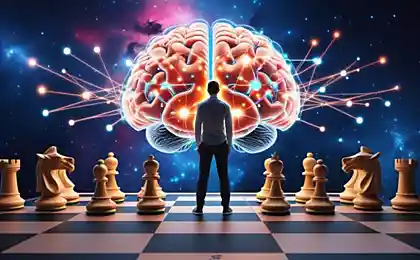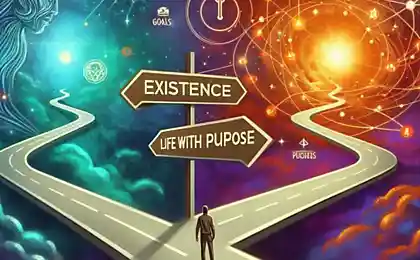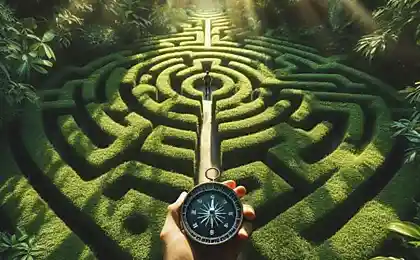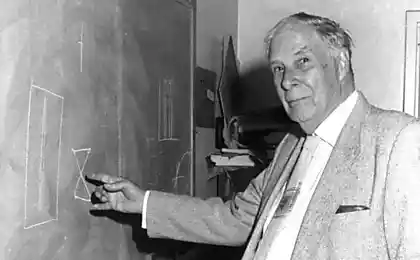319
How to learn to think big to achieve more

If you’ve ever noticed that your accomplishments don’t match your potential, perhaps the root of the problem isn’t your ability or hard work, but your way of thinking. Large-scale thinking is a key factor that separates outstanding personalities from ordinary ones.
Why large-scale thinking transforms life
Our brains are amazing in their ability to embody what we imagine. But all too often we limit our dreams and goals to the comfort zone, making the fundamental mistake of perception – we don’t realize the enormous potential that lies within each of us.
Research in neuroplasticity shows that our brains are constantly making new neural connections in response to new tasks and goals. As we begin to think bigger, our brains literally rewire to fit a new level of ambition.
Stanford psychologist Carol Dweck concluded in her research that people with a growth mindset — those who believe in the ability to develop their abilities through effort and perseverance — achieve significantly more than those who consider their abilities to be fixed. Big thinking is impossible without this growth mindset.
Characteristics of a large-scale thinker
People who think big are distinguished by a number of features that form their perception of the world and approach to goals:
- See opportunities where others see obstacles
- Focus on potential solutions, not problems
- Think long term, planning for years and decades ahead
- See failures as valuable lessons, not failures
- Surround yourself with people who think at the same level or higher
- Continuously expand your comfort zone through new challenges
Five strategies for developing large-scale thinking
The good news is that big thinking can be learned. Like any skill, it requires practice and conscious effort. Here are five proven strategies to help you start thinking big:
- Expand your horizons through systematic learning
Immerse yourself in new areas of knowledge regularly. Read biographies of great people, study disciplines far from your main specialization, travel to places with an unusual culture. As you broaden your horizons, your brain begins to see connections between disparate ideas, which is the foundation of creative thinking.
Set aside 30 minutes daily to read books about the achievements of outstanding personalities in various fields. - Practice mental scaling
Take any of your goals and multiply it by 10 times. Do you want to increase your income by 20%? Think about how to increase it by 200%. Planning to help 50 clients? Imagine helping 500. This exercise not only breaks down mental barriers, but also forces the search for fundamentally new approaches instead of linear improvement of existing ones.
Make a list of 3-5 of your current goals and reformulate them by multiplying the scale by 10 times.
- Create an environment that stimulates growth
Jim Rohn once said that we become the average of the five people we spend the most time with. Surround yourself with people who think big and achieve outstanding results. Their way of thinking will gradually transform your own through social learning.
Find a community of like-minded people or mentors whose achievements inspire you and engage with them regularly. - Use the Time Telescope technique
Imagine yourself in 20 years. What will your life be like if you continue at your current pace? Now imagine that you started thinking and acting on a big scale -- how would the picture change? Research shows that the ability to clearly visualize the long-term future motivates us to make bolder decisions in the present.
Meditate by imagining your life 10 and 20 years from now under different developmental scenarios. - Turn failure into a springboard for growth
Large-scale thinkers perceive failure not as a sign of personal failure, but as valuable information to adjust the course. After each failure, ask yourself three questions: “What have I learned?”, “How does that make me stronger?”, and “What are the opportunities that come from this experience?”
Create a “lessons learned journal” that captures valuable insights from each failure.
Harvard Business School professor Rosabeth Moss Kanter has developed a technique to help see the bigger picture. When solving any problem, rise to the three levels of abstraction above:
- Level one: What am I doing right now? (e.g. writing code)
- Level two: What's the bigger problem? (I'm building an automation tool)
- Level three: What is the long-term goal? (transforming the industry through technology)
- Level four: How does this affect society as a whole?
Neurobiological foundations of large-scale thinking
Interestingly, large-scale thinking has neurobiological foundations. Research shows that the prefrontal cortex—the area responsible for planning and decision-making—activates more when we think about large-scale goals. Moreover, the regular practice of such thinking enhances the connections between the prefrontal cortex and other brain regions, which improves our ability to coordinate complex actions.
The "Contradictory Scenarios" technique
To train large-scale thinking, it is useful to regularly perform the following exercise: choose an important goal and describe two extreme scenarios:
- A scenario of absolute success: What happens if everything goes perfectly?
- A scenario of total failure: What negative consequences are possible?
Examples of the Transformational Impact of Scale Thinking
There are many examples of large-scale thinking leading to revolutionary change:

Elon Musk didn’t just conceive of an electric car – he set out to transform the entire automotive industry. Moreover, he is simultaneously working to revolutionize the space industry and energy, linking these areas into a single strategy for the sustainable development of mankind.
It’s important to understand that thinking big doesn’t necessarily mean global ambitions that change the world. It can also manifest itself in personal life. For example, a person who thinks big doesn’t just want to lose 5 kg – he creates a complex system of lifestyle changes that transforms his physical and psychological health for decades to come.
Five signs that you are limiting your thinking
- Do you often say “It’s impossible” instead of “How can you do it?” ?
- Most of your goals can be achieved without leaving your comfort zone.
- You rarely experience a sense of intellectual tension.
- There are no people around you who have achieved much more than you.
- You can’t name a goal that scares you with its scale.
From Theory to Practice: Your 30-Day Plan to Develop Scale Thinking
Changing the way we think requires systematic practice. Here’s a 30 day plan to help you start thinking big:
Week 1: Broadening perspective
- Day 1-3: Identify your current limiting beliefs and write them down.
- Day 4-5: For each limiting belief, find at least 3 examples of how people have overcome these limitations.
- Day 6-7: Reframe each limiting belief into a reinforcing one.
- Day 8-10: Write down your current goals and ask the question, “What if I zoomed in 10 times?”
- Day 11-12: Identify concrete steps to achieve these 10X goals
- Day 13-14: Visualize your life after reaching 10X goals by writing down details
- Day 15-17: Identify 5 People Who Have Already Achieved What You Are Aspiring to Do and Study Their Approaches
- Day 18-19: Join at least one community where large-scale thinking people are concentrated.
- Day 20-21: Make a list of the resources (books, courses, tools) you need to achieve your 10X goals.
- Day 22-24: Do at least one action every day to achieve your 10X goals.
- Day 25-27: Practice the “three levels of abstraction” technique for every day task
- Day 28-30: Review the changes in thinking and identify the next steps.
Conclusion: large-scale thinking as a path to transformation
Large-scale thinking is not just the skill of achieving big goals. This is a fundamental shift in the perception of yourself and your capabilities. Starting to think big, you will not only achieve more, but also discover new facets of your personality, the existence of which was not even suspected.
Remember that transformation does not happen overnight. This is a gradual process that requires patience and persistence. But each step along the way brings you closer to a version of yourself capable of extraordinary achievement.
We become what we think most of the time.
Start today – choose one strategy from this article and integrate it into your life. After a month of consistent practice, you will notice how not only your thinking changes, but also the surrounding reality. Because ultimately, our thoughts really shape our world.
Glossary
Scale thinking
The ability to formulate ambitious goals, see the big picture of what is happening and find innovative solutions to complex problems that go beyond the usual patterns.
Neuroplasticity
The ability of the nervous system to change its structure and function in response to new experiences, learning and stimulation of the environment.
Growth setting
A concept developed by psychologist Carol Dweck describes the belief that abilities and intelligence can develop through hard work, perseverance, and purposeful practice.
Prefrontal cortex
The area of the brain responsible for planning complex cognitive behavior, making decisions, moderating social behavior, and achieving goals.
10X thinking
An approach to goal-setting that involves tenfold increase over original plans to overcome limiting beliefs and stimulate innovative solutions.
Limiting beliefs
Negative ideas about oneself and one’s capabilities, which one takes for truth and which prevent the realization of potential.
Time Telescope Technique
A method of visualization and planning based on mentally moving oneself into the distant future to evaluate current decisions in the context of their long-term impact.
























